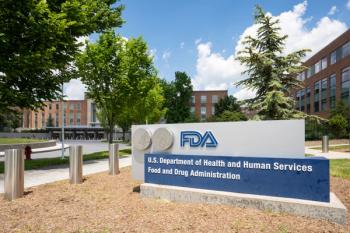
2022 Updates for COVID-19 Vaccination Recommendations, Guidelines in Adults, Children
COVID-19 vaccine recommendations have parallel tracks for adults and parallel tracks for children broken down into whether an individual is immunocompromised.
Staying up to date on information pertaining to COVID-19 vaccines enables pharmacists to better support patients appropriately via motivational interviewing skills to provide them with the information they need, explained Amanda Price, PharmD, BCACP, in a presentation at the
When looking at
Adult COVID-19 Vaccination
For patients who are not immunocompromised, current recommendations state that these adult patients should be administered 2 doses of an mRNA vaccine or 1 dose of an adenovirus conjugate vaccine as a part of their primary series.
“While it’s not the preferred choice, the second-line choice is to offer 1 dose of the adenovirus conjugate vaccine,” Price said. “This is not the first-line choice mostly because of risk, but we recognize that there may be certain situations where patients are either potentially afraid of the new technology, as is evidenced by the term mRNA, or they may not have access to an mRNA vaccine. In those settings, it would be appropriate to offer the adenovirus conjugate vaccine as a method of getting them vaccinated with something, which is better than nothing.”
Price explained that for the booster dose for non-immunocompromised patients, they can be given either 2 or 5 months following the primary series using the same vaccine as the primary series vaccine, either mRNA vaccine, or the adenovirus conjugate vaccine. Price noted that for the booster dose, the adenovirus conjugate vaccine remains a second-line choice that should be used for patients when applicable. Additionally, patients 50 years of age and older, especially those with comorbidities, should be given a second booster dose 4 months after the first booster dose.
For immunocompromised patients, the primary series can consist of 2 doses of an mRNA vaccine or 1 dose of an adenovirus conjugate vaccine, followed by a third additional dose of either mRNA vaccine (mixing is fine) as a part of that primary series. However, Price noted that for this third dose, only the mRNA vaccine should be given for this patient population, as the adenovirus conjugate vaccine is not an appropriate third dose for this population.
“[This third additional dose] can lead to some nomenclature confusion. You’ve probably had patients who have said, ‘I’ve gotten 3 doses,’ and the assumption is that’s 2 doses and a booster. [But] if they’re immunocompromised or immunodeficient, that additional third dose is necessary to ensure that they provide a good immune response,” Price said.
Additionally, immunocompromised patients should be given 2 booster doses on top of the primary series and the additional dose. For this immunocompromised patient population, they can receive a booster following 3 months from their initial vaccination in the primary series, whereas their second booster dose can be 4 months after the first booster dose. Each booster dose can be either the same as the primary series vaccine or either mRNA vaccine.
“A couple things that can change the series and the timing here [includes] one of the biggest risks associated with the mRNA vaccines, [which is] myocarditis. We see this more in our younger male patients,” Price said. “One of the reasons why you might choose to delay a patient from dose 1 to dose 2, extending it from 3 weeks or 4 weeks from the initial interval out to 8, is the recognition that we may actually mount better response with a slightly delayed interval, and that may potentially decrease the potential risks of that myocarditis. That patient population might be that young, healthy, male patient, where you say, ‘You know what, in this case, I think it might be appropriate to go ahead and delay out to that 6- to 8-week mark to increase the effectiveness and decrease the side effects.’”
Pediatric COVID-19 Vaccination
As of today, the only vaccine approved for children under aged 18 years is the Pfizer mRNA vaccine, Price explained. However, she also noted that the approval for the Moderna mRNA vaccine in this patient population is expected to come soon.
“I expect that Moderna [approval] will be any day now, and in addition we will actually get information regarding the use of these vaccines in patients under the age of 5,” Price said. “So stay tuned and I think that that will be happening relatively quickly.”
The primary series in non-immunocompromised children is 2 doses of the mRNA vaccine at 0 and 3 weeks, with Pfizer being the approved and preferential vaccine currently for this patient population, Price noted. For the booster dose, children between the ages of 5 and 17 years are eligible for the first booster dose 5 months after the initial dose.
In immunocompromised children, they should also be given a 2-dose primary series plus an additional third dose, which is necessary to mount their immune response. The schedule for the booster dose in immunocompromised children is the same as it is in immunocompromised adults, with the first booster given at 3 and 4 months following their initial vaccination, Price explained.
“There is no indication at this point in time for a second booster dose in the pediatric population,” Price said. “In some patients, that [first] booster dose is limited to the 12- to 17-year age range as well.”
Common Questions About COVID-19 Vaccines
Many pharmacists hear questions regarding whether the COVID-19 vaccines can be given with other vaccines. Price noted that initially, the answer to this question from the CDC was no and that other vaccines should be separated by 2 weeks following the COVID-19 vaccine.
“That has since been changed in the effort to ensure that we’re offering all age-appropriate and condition-appropriate vaccinations. The CDC actually says please go ahead and vaccinate with all of the vaccinations appropriate in different administration sites,” Price said.
Another common question pharmacists get asked is whether it’s better to get administered a different type of vaccine in the booster dose than the one given in the primary series.
“The answer is there may be some advantage to a heterologous, or mix and match approach, but the most important primary thing is to get a shot in the arm,” Price said. “So if that’s what you have available, then please do so. It would be appropriate to mix and match with the mRNAs, but using the adenovirus conjugate, again, is the second-line [choice].”
For more difficult questions that may have a multitude of factors involved in assessment of the appropriate answer, Price suggested the use of immunize.org, which is a site that lists answers to common questions pharmacists are asked and may be asking themselves in their immunization practice.
“This is a great resource,” Price said. “I appreciate how direct and easy it is to use. Immunize.org is a website that is sponsored and maintained by the Immunization Action Coalition, and it has a great section called Asked the Experts where it pulls information from the CDC [Advisory Committee on Immunization Practices] and even from experts to answer specific questions that you would find yourself asking in the course of practice.”
Additionally, Price noted that there is another smaller subset of the immunocompromised patient population to consider in regard to COVID-19 immunization guidelines, and those are patients taking immunosuppressive agents. For guidelines on the best approach for COVID-19 immunization in this patient population, Price suggested the website of the American College of Rheumatology as a resource, because they provide current guidelines for vaccinations of patients taking immunosuppressive agents.
REFERENCE
Price A. Vaccination Updates 2022: COVID-19 and Beyond. Presented at: ASHP Summer Meeting 2022; June 12, 2022; Phoenix, AZ.
Newsletter
Stay informed on drug updates, treatment guidelines, and pharmacy practice trends—subscribe to Pharmacy Times for weekly clinical insights.










































































































































































































